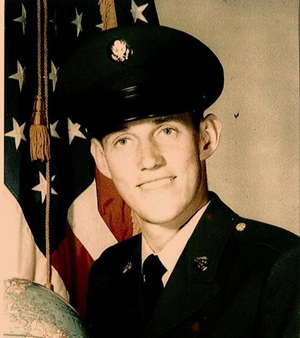
Memorial Fund

Remember...
Roy Dwight Heaster
1945-1966
"Keep your head up. God gives his hardest battles to his strongest soldiers."
Author unknown
 Memorial Fund |
Remember...Roy Dwight Heaster
|
Roy Dwight Heaster was born on May 30, 1945, in Kieffer, Greenbrier County, West Virginia, but grew up in Crawley, West Virginia. His parents were Benjamin Franklin Heaster and Velma Mabel Williams Heaster. Benjamin and Velma raised five boys to adulthood: William, Franklin, Ralph, Roy, and John. A sixth child, Patrick Jesse, was born deceased. Roy experienced another traumatic event in 1951, when his father died from injuries sustained during a strip-mining accident when his tractor overturned, as he was working as a coal miner. Needless to say, Roy's childhood was a difficult experience to endure. Roy attended and graduated from Rupert High School in 1963, which was a few miles up Route 60 from his hometown of Crawley.
The beginnings of the Vietnam War can be traced to November 1, 1955, and it officially ended on April 30, 1975. The war was started to prevent the communists, the North Vietnamese, from taking over South Vietnam. President Lyndon B. Johnson authorized the deployment of U.S. troops to Vietnam in March of 1965. The United States aided the South Vietnamese resistance in order to help contain and stop the spread of communism.
Roy was drafted into the Army in 1965 to meet the demands of the U.S. for more ground troops to serve in Vietnam. According to Jack Lockhart, he and Roy served together at Fort Ord, California, as this was the primary training facility for the Army prior to deploying the new trainees to Vietnam. Roy Dwight Heaster started his tour in Vietnam on February 13, 1966. Roy was a private first class, infantryman, and was assigned to Charlie Company, 2nd Battalion, 27th Infantry Regiment, 25th Infantry Division.
The 25th Infantry Division established the Củ Chi Base Camp (also known as Củ Chi Army Airfield) with the Army of the Republic of Vietnam (ARVN) in the Củ Chi District northwest of Saigon in Southern Vietnam in 1965. This base camp was located south of the Viet Cong stronghold known as the Iron Triangle. Although Củ Chi was located in a very wide area cleared by bulldozers and other heavy equipment, its deliberate placement in the heart of enemy-controlled countryside made it one of the most dangerous installations in all of Vietnam. A map of the Củ Chi Base Camp can be found on the website of the 25th Aviation Battalion (http://www.25thaviation.org/id27.htm, accessed 4 April 2019.)
The 25th Infantry Division was part of the Counter-Offensive Phase II Campaign from 1 July 1966 to 31 May 1967. United States operations after 1 July 1966 were a continuation of the earlier counteroffensive campaign. Recognizing the interdependence of political, economic, sociological, and military factors, the Joint Chiefs of Staff declared that American military objectives should be to cause North Vietnam to cease its control and support of the insurgency in South Vietnam and Laos, to assist South Vietnam in defeating Viet Cong and North Vietnamese forces in South Vietnam, and to assist South Vietnam in pacification extending governmental control over its territory. (U.S. Army Center of Military History, "Vietnam War Campaigns," accessed 4 April 2019, https://history.army.mil/html/reference/army_flag/vn.html.)
On July 16, 1966, while more than likely on a combat patrol to seek and destroy the Viet Cong in Quang Nam province, Pfc. Roy D. Heaster's unit made contact with enemy forces. As a result of the lethal engagement, he died from small arms fire. A Purple Heart recipient, among other awards, Pfc. Heaster was only 21 years old when he was killed in action on that fateful day. The family believes he was killed while trying to save one of his comrades-in-arms.
Article prepared by Peyton Cooley, Buddy Lomas, and Maj. (Ret) T.B. McGee, George Washington High School JROTC
March 2019

West Virginia Archives and History welcomes any additional information that can be provided about these veterans, including photographs, family names, letters and other relevant personal history.